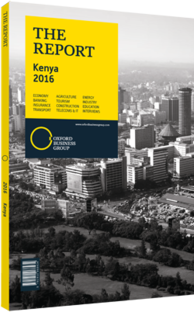Rise of e-health transforms Kenya's health sector
Given the limitations of Kenya’s health care system in terms of funding and accessibility, the country is looking at a number of e-services to meet the needs of a population with limited spending power and poor access to formal health care facilities.
Going Mobile
Both the government and private sector have been looking at ways of using mobile technology to improve access to health care services for Kenyans. By the end of the second quarter of 2015, mobile phone penetration in Kenya had exceeded 89.3%. This provides a strong base from which to market e-services for health care.
Indeed, as the informal sector accounted for over 75% of employment as recently as 2012, the government and private sector are looking at mobiles, rather than payrolls and companies, as a means of marketing health insurance to the wider populace. In 2010 for example, the government-run National Hospital Insurance Fund (NHIF) signed a partnership with mobile operator Safaricom to allow the self-employed and informally employed to pay health insurance premiums through the M-Pesa mobile money platform. The NHIF is already obligatory for salaried employees, but this move will help expand coverage.
Similarly, private firms are looking at this model. In 2013 PharmAccess, a Dutch NGO, signed a memorandum of understanding with Safaricom and the M-Pesa Foundation to look at the roll out of mobile health products. PharmAccess is also working with local insurer, AAR Insurance, to develop products including the Mobile Health Wallet, a credit source linked to a mobile phone that can only be used to pay for health care services. A customer can remit money from his or her account to contacts that need it.
Meanwhile, Safaricom has developed a number of mobile health, or mHealth, services that it hopes to roll out. Thus far, there are 45 mHealth services. These include Daktari, a mobile hotline for medical enquiries; the MedAfrica App, which provides contact details for doctors and dentists, as well as basic diagnostic information; and AMPATH, a government service that includes SMS messaging to remind HIV patients to take their medicine.
E-Service
Beyond these mobile applications, there are a number of other new e-services that are being launched to improve access to care and better health outcomes. For example, in May 2015, the Ministry of Health announced plans to launch e-diagnostic clinics in partnership with Merck, the international pharmaceutical company. These facilities will allow local patients and physicians in remote areas to interact with cancer specialists at Kenyatta hospital in Nairobi.
“[The] national telemedicine programme… will enable patient consultations with specialists in referral hospitals to help earlier diagnosis, quicker and better care,” James Macharia, cabinet secretary for health, told the local press. “Video conferencing technology takes into consideration the reality of Africa, in which the majority of the poor population live in a rural set-up with inadequate health facilities and less developed road infrastructure, which are barriers to better health care, especially in early cancer detection and treatment,” he added.
It is still early days for such systems and not everyone is convinced that such technology will have a transformative effect on the health care sector. “I feel it is a good concept but I don’t know what the quality will be.” Phil Dastur, former CEO of M P Shah Hospital in Nairobi, told OBG. “There’s great merit to it in areas where clinics are not easily reachable. But even then, in remote areas, a patient would need to travel to get medication,” he added. Nonetheless, such technologies are likely to aid in the early detection of non-communicable diseases, which are on the rise in the country. With mobile technology being used to develop new insurance schemes, the prospects for the geographically and financially marginalised segments of society should improve markedly.
You have reached the limit of premium articles you can view for free.
Choose from the options below to purchase print or digital editions of our Reports. You can also purchase a website subscription giving you unlimited access to all of our Reports online for 12 months.
If you have already purchased this Report or have a website subscription, please login to continue.

